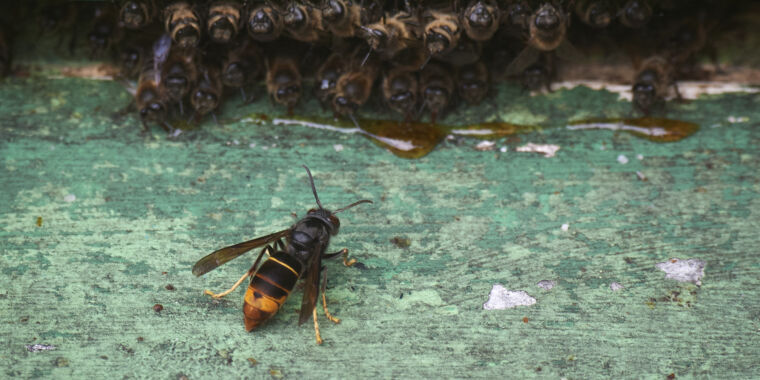- cross-posted to:
- beekeeping@mander.xyz
- cross-posted to:
- beekeeping@mander.xyz
Apparently this is Vespa velutina, the Asian hornet. I thought it was Vespa mandarina, the Asian giant hornet, which is considerably larger, and also bad news for the European honeybee.
We had a small infestation of the latter a couple years ago on the West Coast that we think is gone. Was in the news for a while.
EDIT: Huh. Reading about it after the event, that sounds really weird. Apparently there were three completely-genetically-different populations – not from the same places in Asia – discovered that were all introduced at about the US-Canadian border at about the same time. That seems unlikely to be a coincidence. I wonder if that could be an intentional transport and release? Like, it’d harm American agriculture quite a lot if that thing started spreading, as it’d mess up European honeybees being used as pollinators. It’d be a very low-cost biological attack.
https://en.wikipedia.org/wiki/Asian_giant_hornet
A mitochondrial DNA analysis was performed to determine the maternal population(s) ancestral to the British Columbia and Washington introduced populations. The high dissimilarity between these two was similar to the mutual distances between each of the Chinese, Japanese, and Korean native populations suggesting the specimens collected in 2019 were from two different maternal populations, Japanese in BC and South Korean in Washington. This suggests that two separate introductions of the Asian giant hornet occurred in North America within about 80 km (50 mi) of one another within a few months.
In June 2021 a dead, desiccated male was found near Marysville, Snohomish County, Washington and reported to WSDA. Its different, more reddish color form immediately suggested yet another parental population from the Japanese and Korean ones already known. USDA APHIS (Animal and Plant Health Inspection Service) performed a genetic analysis several days later and, together with WSDA, confirmed it was of a third, unrelated population. The discovery of a male in June is “perplexing” given that the earliest male emergence in 2020 was July, which was already earlier than normal for the home range. This and its desiccated state indicate it did not emerge in 2021 at all, but is instead a dead specimen that had already emerged in a previous year.
Well if it’s landed, squash it. Problem solved.
A fly should be called a Land, because that’s what it does half the time. - MH





